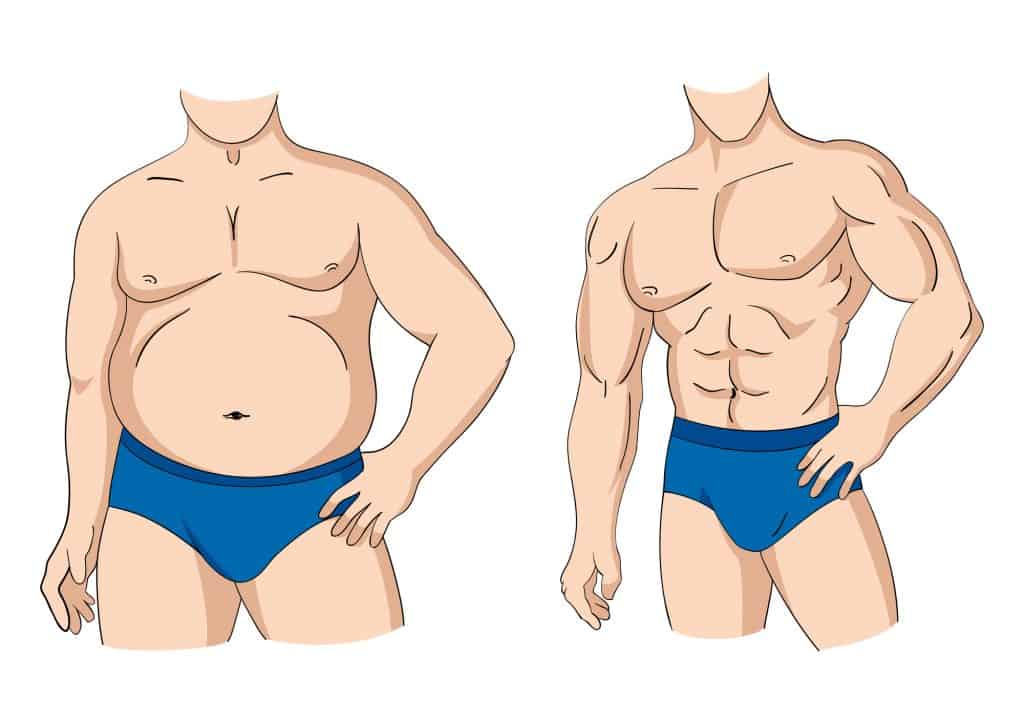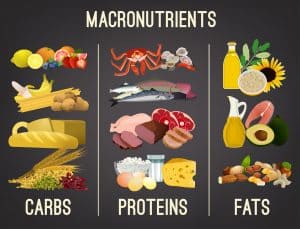I was carrying too much unwanted weight. I’m not talking crazy obese—but my “skinny” clothes were increasingly being confined to the back of the closet.
Despite starting weight training, my gains were hidden—I knew I had to do something to transform my body into a beach-ready one I’d set my sights on.
Yet, the diets I tried had no effect or left me feeling down and lethargic.
After much research on the science of weight loss, I found the answers.
It is not starvation. It is not excessive boring cardio. It is much simpler than that.
It is a process!
Body transformation requires two things only: understanding of the quantitative steps and a strong will.
This comprehensive guide on body transformation is the culmination of those efforts—and I’m going to share it with you. For FREE!
If you follow the exact steps in this guide for only 90 days, you will see magnificant results. I promise.
- Table of Contents
So, How to Lose Weight - Introduction to body transformation
Exciting, right? The opening heading in this article is the question which you’ve been seeking the answer for.
Sadly, I can’t give you the complete solution in just this first section (it’d be a damn short article). But, let me begin this guide by providing you with the one overriding principle behind dropping the pounds. It’s this:
Less calories, more exercise.
That’s it.
In principle, it’s not difficult. Consume fewer calories than you expend and you lose weight. Your body constantly requires “fuel”—that is, calories. Even when apparently “doing nothing” (like reading this article)—you’re using energy.
This is your BMR (basal metabolic rate)—the speed at which calories are burned while being at rest. Increase your expenditure (through exercise) and your body requires more fuel—which it sources from stored carbohydrates (as glycogen) and fat.
Hence, use more calories than you eat and you burn off the pounds—losing weight.
This simple message over the past decades has become skewed—mainly by marketing and commercial interests.
Listen up.
The diet and weight loss market is worth an estimated $72 billion in the US alone. Even getting a small slice of this action is going to be profitable. Thus leading to the plethora of weight loss programs currently available.
Here’s the truth.
Take any diet you can think of—paleo, keto, Atkins, 5:2, cabbage, intermittent fasting, vegan—and they can all work to help you lose weight.
Equally, they can all have no effect whatsoever.
These diets only work if you use more calories than you ingest. Seriously.
In a definitive study, experts concluded that— “independently of the method for weight loss, the negative energy balance alone is responsible for weight reduction”.
So, does this negate the concept of dieting entirely?
This is another myth I want to dispel—”dieting” doesn’t mean starving yourself, nor does it automatically mean weight loss.
A diet is just an all-encompassing term for the food you eat. You’re already on a diet—ok it may consist of pizza and donuts (or as some call it flexible dieting) and not be particularly healthy—but it’s still a diet.
Some diets are designed to increase weight—bodybuilders require a massive calorie surplus in order to build muscle.
Hence, during this guide, when I refer to diet, I’m talking about food intake. Not necessarily a novel or bespoke plan for dropping the pounds.
Here’s the key:
As long as you ensure you’re achieving your nutritional and mineral requirements for health—you can use whatever diet you want. Even invent your own—as long as you enjoy eating it. All you need to do is watch the calories—and you’ll lose weight.
That’s the scientifically proven principle.
You could stop reading now and just start calorie counting.
Don’t do that.
Because there is a huge difference between losing weight to become a “skinny fat” and between “getting in shape”!
The rest of this guide shows you how to lose weight and get in shape in a healthily way, and to achieve the best possible results.
Do Men and Women Lose Weight Equally?

Often, people find it easier to lose weight alongside a friend, partner, or colleague.
Having a fat-shedding buddy can help with motivation and focus. However, be careful if you’re doing this with someone of the opposite sex. Men and women lose weight at different rates.
More specifically—men lose weight more rapidly than women.
Typically men have a higher muscle content and faster metabolism than their female counterparts.
This has two main effects. Firstly, muscle is more energy demanding than fat—meaning more energy is expended to maintain muscle, thus powering weight loss. Furthermore, a faster metabolism means that even when sedentary, guys use more calories.
The Weight Loss Misconception

We’re all guilty of the same sin, myself included.
When trimming down we most commonly refer to this process as losing weight—it’s not.
What we ideally want, is to lose fat.
Your total body weight is made up of tissue, bones, muscle, blood, water, and fat, etc. Ok, you may want to drop some water weight—but usually, it’s only the fat you want to disappear.
Losing bone mass, essential fluids such as blood, or muscle is really going to screw your body up.
Which leads me to another massive misconception—the body mass index (BMI).
If you’ve ever Googled “how much should I weigh” or similar—the first results that appear are BMI calculators. Basically, it compares your entire body weight to your height and informs you whether you’re underweight, overweight, or indeed, perfect.
Despite being developed back in the 19th century—many health practitioners still use this process when calculating well-being.
The issue is—this method is completely flawed.
Scientists now agree that BMI is a poor way to calculate health, fitness, and obesity. As it’s concerned with total body weight—results are often unreliable. For example, guys and girls carrying muscle or water are often miscategorized as overweight.
My advice is this:
Ignore BMI. Instead, concentrate on your body fat percentage. That is, the amount of your entire body mass that consists of fat.
There are numerous ways to calculate this—ranging from easily obtainable calipers or scales through to the more complicated (and costly) X-rays.
Here are the “healthy” amounts of fat your body should contain by age, according to WHO (World Health Organization) and NIH (National Health Institute) guidelines:
Age (years)
Female % body fat
Male % body fat
20 - 39
21 - 33%
8 - 20%
40 - 59
21 - 34%
11 - 21%
60 - 65
24 - 36%
13 - 25%
All that being said—I’m now going to contradict myself. For ease of reading in this article, I’ll still conform to the norms by referring to it as “weight loss”—but for this, always read “fat loss”.
How Much Weight Should I Lose?

That, my friend, is up to you.
Despite what glossy magazines and social media want you to believe—there’s no such thing as the “ideal” physique.
We don’t all have to be muscle-bound athletes holding around 5% body fat all year long. It is just not healthy and unsustainable beyond competitions.
The secret is this—set yourself a target based on your requirements.
Forget about the look, carrying too much fat as bodyweight can lead to serious health conditions. Such as heart disease, diabetes, and high blood pressure. Even dropping a few pounds means overall well-being improves—and this could be your aim.
Furthermore, you may just want to trim up. Losing fat can mean being able to slip back into your favorite clothes or be ready to hit the beach on that summer vacation.
You could also decide to hop on a bodybuilding or a physique show and drop your body fat up to a high single digit.
Ultimately—you could be focused on achieving the most defined, cut, and chiseled figure possible. A physique that reflects the immense hard work you put in at the gym.
Whatever your target, the process is the same—watch the calories.
Here is a body fat percentage by category:
Category
Female % body fat
Male % body fat
Essential fat
10 - 13%
2 - 5%
Athletes
14 - 20%
6 - 13%
Fitness
21 - 24%
14 - 17%
Average
25 - 31%
18 - 25%
Obese
> 31%
> 25%
How to Calculate Your Fat Loss Calories
As explained earlier, the only way to drop the pounds is to ensure your calorie intake is less than expenditure.
But, this isn’t a one-size-fits-all situation. Our age, sex, height, and current levels of activity all affect how many calories a) we need to survive (basal metabolic rate or BMR) and b) to lose weight.
One of the most respected (and scientifically proven) methods is known as the Harris–Benedict equation.
Here it is:
Males:
BMR for Adult male = 66 + (6.3 x body weight in lbs.) + (12.9 x height in inches) – (6.8 x age in years)
Females:
BMR for Adult female = 655 + (4.3 x weight in lbs.) + (4.7 x height in inches) – (4.7 x age in years)
However, if you’re not too hot when it comes to numbers—here’s a handy calculator I developed for you.
The calculator does two things:
- determines how many calories a day you need to survive (BMR).
- determines how many calories a day you need to maintain your current weight (also know as total daily energy expenditure or TDEE).
Now you know how many calories you need to maintain your current weight.
Next, drop that number by 15% to 35% (depending on your levels). This should results in your weight loss goal. But how to calculate it?
I developed the weight loss calculator below.
Based on your inputs of how many weeks you’re dieting for (be realistic, though at least 8 weeks), And how many pounds a week you’re aiming to lose:
The calculator does the following:
- it tells you daily caloric intake to achieve weight loss.
- your future weight after the number of weeks you input.
So, know you know how many calories you need every day to start dropping the extra cargo.
In theory, whatever foods you eat (pizza, donuts, fruit, legumes, shakes) achieving this figure will lead to weight loss.
But, if you want the ultimate in weight loss results— that is to get in a muscular shape— you need to know about macronutrients.
How to Eat The Right Way to Transform Your Body?

There’s little point shedding excess weight to boost well-being and then wrecking it all by consuming unhealthy foods.
Actually, there’s nothing intrinsically “unhealthy” about most foodstuffs (well, possibly barring trans fats). What can be an issue, is consuming an incorrect balance of the macronutrients (macros).
When referring to macros I’m talking about the big three—fats, proteins, and carbohydrates (although scientifically, alcohol is often included).
These compounds are the energy (or calorie) providers in food—broken down as follows.
- Fat—9 calories per gram.
- Carbohydrates—4 calories per gram.
- Protein—4 calories per gram.
It’s not just important to ensure you’re achieving the correct calorie intake for fat loss by watching the macros. You also need to make certain you’re consuming the correct amounts of each. An often quoted ratio as the 40:40:20 rule (40% protein, 40% carbohydrate, and 20% fats).
However, for the ultimate goals for weight loss, aim towards:
- 50% protein.
- 30% carbs.
- 20% fats.
Once you figure out your daily caloric goals to lose weight, apply this ratio to the macro calculator below. The calculator should tell you how many grams per day of each macronutrient you should consume.
Here’s why they’re so essential.
Protein
This is the building block of muscle. Without protein (and weight training), muscles, when you lose weight, will not occur. This is referred to as “skinny fat”, as I mentioned earlier.
It’s especially important if you’re aiming towards a typically muscular physique. You can train as hard as you like—but you still require protein to boost muscle growth.
Yet, it’s not all down to overall appearance.
High levels of protein in the diet can stave off hunger pangs—meaning you’re less likely to consume excess calories. Furthermore, protein can elevate the metabolic rate—meaning increased levels of energy is expended even when at rest.
Carbohydrates
Carbs have been given a fairly bad rep over the past years. The rise of Atkins, Keto, and low-carb diets all promote dramatically cutting down on this macro. But, that can be a mistake.
By all means, knock them back somewhat (as in my 50:30:20 plan). But, my advice is this—don’t omit them entirely. Carbs are the body’s first choice of energy reserves.
Listen up.
Firstly, many diets can leave you feeling down, tired, and lethargic—and this can be due to insufficient carbohydrate intake. An unhappy dieter is one who’s most likely to ditch the fat loss plan and return to a weight-gaining lifestyle.
Secondly, as you will see later, consistent training is important—carbs fuel workouts. The more intense your training sessions—the more weight will be dropped.
So, concentrate your carbs intake around your workout. Pre and post workout.
Fats
Ok, I know we’re trying to lose fat here—but your body still requires them.
This macro provides energy, transports vitamins, improves immunity, protects the essential organs, and provides heat insulation. It’s still your friend.
Too few fats or carbs in the diet and your body needs to search for alternative “fuel”. Typically, it breaks down proteins in muscle leading to a catabolic state (muscle wasting).
So, down to business.
I’ve been knocking around macros and percentages in this guide—but what does that mean in real terms for your diet?
Essentially, for everything you consume, you need to check the nutritional label on foods for their calorie and macro content. However, if this is impossible—use a reliable database such as that provided by USDA (United States Department of Agriculture).
At first, it does appear something of a hassle. Yet, after a couple of weeks, the process becomes much simpler. You’ll know the basic composition of foods—and what and how much to eat.
To give you a helping hand and start you on the right journey—I’ve formulated an example one-day fat-busting meal plan. This is based on my 50:30:20 ratio mentioned earlier. Additionally, this assumes a daily intake of 1600 calories.
After using the calorie requirement calculator linked above, you can tweak the meal plan for your own energy requirements.
One more thing—don’t sweat the small stuff.
Trying to hit the exact percentage of each macro and remain within your calorie allowance will drive you crazy. Just aim to be within around 5%. Over time it will balance itself out.

Example of a Meal Plan for Body transformation Weight Loss
In this example, I will assume that your maintenance caloric intake (TDEE) is 2500 calories. I will also assume that your cut your daily calories by 20%; that is 2000 calories.
Meal
Food
Macros
KCals
Meal 1
1 cup oatmeal
1 cup egg whites
1 tbsp Peanut butter
50 g blueberries
38.8 g carbs
36.3 g protein
11.7 g fats
405.7
Meal 2
1 scoop whey protein
25 g strawberries
4 g carbs
25.2 g protein
1 g fats
126
Meal 3
10 oz chicken breast
1/2 cup rice
50 g broccoli
38.5 g carbs
92.5 g protein
10.4 g fats
617.6
Meal 4
1 scoop whey protein
25 g strawberries
4 g carbs
25.2 g protein
1 g fats
126
Meal 5
1 fillet Tilapia fish
1/2 cup rice
50 g broccoli
38.5 g carbs
45.5 g protein
4.2 g fats
373.8
Meal 6
1 cup greek yogurt
1 oz mixed nuts
1/2 grape fruit
25 g carbs
24 protein
16 g fats
339.1
Total
148.8 g carbs
248.6 protein
44.2 g fats
1989
Total daily calories is about 1990, which is nearly 2000 calories our target.
This is only an example, but should give you an idea.
Training for Body Transformation

It’s possible to sit on your ass all day and lose weight—as long as you watch the food intake.
If you recall, at the beginning of this guide, I indicated that pounds drop off as long as energy expenditure exceeds intake. Hence, the harder you workout the more calories you use. Meaning, you can actually eat more.
Yet, some people take exercise to extremes in the pursuit of serious fat-busting.
This can be a terrible mistake.
Colloquially, this is known as cardio-bunny syndrome.
These are the guys and girls who go crazy over intense cardiovascular exercise (aerobics, running, gym classes, you know the kind of thing) in order to burn as many calories as possible.
Yeah, you may drop weight—but chances are it won’t all be fat.
Extreme exercise combined with a large calorie deficit creates issues. Simply, you won’t have enough energy in fats and carbs to power this training. Hence, your body looks elsewhere for fuel—your muscles.
Heavy cardio-action with low-calorie intake burns muscles. The body will always store fat—you need it to survive. You become “skinny fat”.
Yep, you’ll fit back into your size zero jeans. But, strip back to your bikini or swimming trunks and you’re left with an undefined, flabby-stomached, and floppy-armed physique.
For the optimum weight loss exercise results, you need to combine three factors—weight (resistance) training, cardio, and rest.
Research shows that utilizing these three elements is the most effective weight loss method.
Cardio
The days of dancing around a fitness class wearing a Lycra leotard or leg-warmers are thankfully confined to the 1980s and 90s.
Today, the ultimate form of cardio is HIIT (high-intensity interval exercise).
This technique involves short bursts of activity—usually from a few seconds to a minute—followed by rest. It’s then repeated.
Not only are these exercises powerfully effective—workouts usually last less than 20 minutes. Therefore making them perfect for our busy 21st-century lifestyles.
Studies illustrate that these small explosions of energy are more effective than drawn-out hour-long cardio. Furthermore, where “traditional” cardio exercises can lead to loss of muscle—research shows HIIT supports muscular development.
With that said, HIIT is good for only 4-6 weeks. Then, you might run into the risk of either burn-out or adaptation. Therefore, it won’t be as effective until you abandon it for at least 2-4 weeks before resuming.
In this case, you can do different forms of cardio I layout here.
Example of A HIIT workout
Complete each of the following exercises—have a break for 20 seconds—then move on to the next. When all are completed, repeat the entire workout from 3 to 6 times.
Push yourself hard on each—you should be working to your absolute limit.
- Butt kickers—40 seconds.
- Squat jumps—40 seconds.
- Mountain climbers—30 seconds.
- Side lunges—45 seconds.
- Side leg raises—40 seconds.
- Walking planks—35 seconds.
Resistance Training
If you are a beginner or new to body transformation, weight training is the only differentiation from being skinny fat.
At the very minimum, you should be working out at least three times a week. For greater muscle gains this can be increased to a maximum of five times.
I would suggest following the push, pull, legs program in this article.
Other splits like upper-lower body program or 4-day split (chest+biceps, shoulders+triceps, back, legs) are also recommended. Always remember to apply the training principle of progressive overload.
Rest and Recovery
The only way to reap the full rewards from your training is to rest.
This gives the muscles time to rebuild, prevents injury, and allows you to have some “you” time. Experts have concluded that overtraining yields counterproductive results, especially in a caloric deficit.
On rest days, by all means, you can do some stretching, meditate, or go for a brisk walk. But keep the serious cardio and weights out of the picture.
How Long Does It Take to Lose Weight?

It’s the ultimate question, right?
After reading this guide you’re probably thinking—yeah sounds good, but how long till I get to my ideal weight?
The truth is, it depends. I know, it’s not the answer you’re looking for.
Level of exercise, calorie intake, current weight, gender, and genetic makeup all play their part. However, there is a way to calculate a general timeframe—and I’m going to share it with you.
This may seem a little complicated—but in truth. it’s actually quite simple.
A few more calculations
The following few calculations will give you a rough idea about how long it takes you to transform your body.
1
Calculate Lean Body Mass (LBM)
This is your total weight minus your body fat. Basically the mass of your skin, bones, tissue, etc.
For the purposes of this exercise, let’s assume your current weight (CW) is 200 pounds.
Using calipers as mentioned earlier in this Complete Guide for Weight Loss, you know your body fat percentage is 20%.
LBM = 200 pounds (CW) x (1 – 20%) = 160 pounds
2
Calculate Ideal Body Mass (IBM)
Your ideal body mass (IBM), not to be confused with body mass index which is a useless metric as I illustrated early, is your target. While your IBM is, say 160 pounds—that’s not always going to be obtainable. Although you are aiming to drop fat and nothing else, exercise and caloric deficit will mean some water and muscle will be dropped, too.
Hence, always factor in these extra pounds. A generally accepted figure is that you’ll achieve 97% of your target. So:
IBM = 160 pounds x 97% = 155 pounds
3
Calculate Your Goal Body Fat (GBF)
This is where things can become a little abstract. You may recall body fat category table from earlier in this guide.
The body fat percentage you’re chasing depends on your goals. The lower end of the scale means a really toned and defined physique—imagine hard, clean cut abs. The upper end means very slight definition.
So let’s assume as a guy you’re aiming somewhere in between, and your GBF is 13%.
4
Calculate Your Goal Weight (GW)
This is calculated by dividing your IBM by one minus your GBF.
GW = 155 (IBM) / (1 – 13% GBF) = 178 pounds
5
Calculate How Long to Achieve Your Goal Weight
From the above, we can see that you need to lose 22 pounds—200 pounds (CW) – 178 pounds (GW) to achieve your goal weight.
But, how long does this take?
The most reliable method is to use your own experience. If you’re currently dropping the weight at one pound per week—it would take 22 weeks. Naturally, if it’s two pounds per week it would take 11 weeks to hit your goal weight.
If you continue past this period you will see much better results. But, remember, make sure your macros are on point and that you’re not suddenly dropping off your caloric intake.
Remember, this is just a guide. However, it can help to keep you focused and ensure that you have realistic expectations about your weight loss and body transformation.
Tracking your Body Transformation Progress
It is important to track your body transformation progress. I recommend the following tracking system:
1- weight yourself on in the morning when you wake up on an empty stomach once every week.
This is a good practice to track your weight loss. It’s amazing to plug-in these into a chart and watch the graph go down week after week.
2- every 4 weeks, go back and plug in your new weight in the TDEE, weight loss, and macro calculators and adjust to macros according to your new goals (usually fewer calories).
Ok, so you weigh yourself every week but why adjusting calories every month?
Well, this is because your body adapts to the new caloric intake after a few weeks. A sudden drop in calories can cost you muscle loss.
The Bottom Line
If you take just one piece of advice away after reading this comprehensive guide on body transformation, it should be this:
Eat fewer calories than you expend and train consistently.
That’s it.
Following this simple rule will lead to fat loss. However, for the ultimate in health, confidence, and physique benefits—try to use as many of the tips included in this article.
As simple as it may sound, it requires hard work in the gym and measuring your calories. Consistency and strong will are keys.
The sooner you start—the faster you’ll achieve the body of your dreams.













